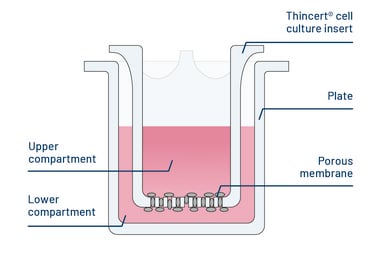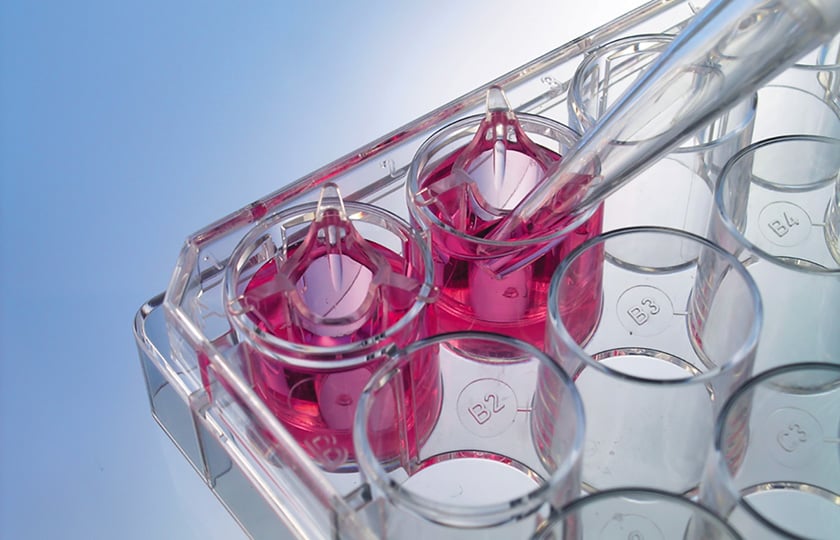An Air-Liquid Interface Model System Based on ThinCert®
An air-liquid interface (ALI) model system based on ThinCert® — the advantages for studying viral infection. ThinCert®, a two-compartment system, can be readily used to prepare a cell model to mimic respiratory epithelia including an air-liquid interface for studies on virus infection. It can also be used to mimic a range of other in vivo situations including cell migration, interactions, lumen-lumen transport, and prepare models of vascularized tumors.
The membrane of ThinCert® enables the two compartments to communicate and functions as a matrix for cell adhesion and growth.
How to use ThinCert® to mimic the air-liquid interface involved in coronavirus infection
The COVID-19 pandemic highlights the need for realistic cell models that are sufficiently realistic to generate the data needed in the fight against respiratory infections. Refinements to these cell models include a transition from simple single-layer cultures to differentiated, organotypic airway models with an air-liquid interface (ALI).
In the previous article, we looked at how researchers had refined a cell model to study coronavirus infection and replication based on human respiratory epithelial cells (HREC) by growing the cells in the ThinCert® system (1). This enabled them to readily generate an air-liquid interface that increased the expression of cell-surface angiotensin-converting enzyme 2 (ACE2), which functions as a receptor for a coronavirus, HCoV-NL63, resulting in increased virus susceptibility and replication efficiency.
ThinCert® is a two-compartment system based on a porous PET membrane with pore sizes ranging from 0.4 to 8 µm and different pore densities. Depending on the pore density, the membrane is transparent or translucent. The membrane enables the two compartments to communicate and functions as a matrix for cell adhesion and growth.
This approach enabled the researchers to generate a proxy of the respiratory epithelium’s composition, structure, and functionality together with an air-liquid interface relatively easily. The result was a model system using a coronavirus with low pathogenicity that could be used to study the mechanisms of infection in in vivo-like situations and under Biosafety Level-2 (BSL-2) conditions.
A versatile solution for cell-based assays and tissue culture
This is one example of the many applications of ThinCert®. The two-compartment system can be used to mimic a range of in vivo situations, including:
- migration and relocation of cells,
- interaction and communication of physically separated cell populations,
- generating vascularized patient-derived tumoroids (PDT; tumor-like organoid),
- formation of tight cell-cell junctions, and,
- vectorial transport between two lumens.

Ready to enter the next level?
Please fill out this form and contact our experts today to find the perfect solution for you!
